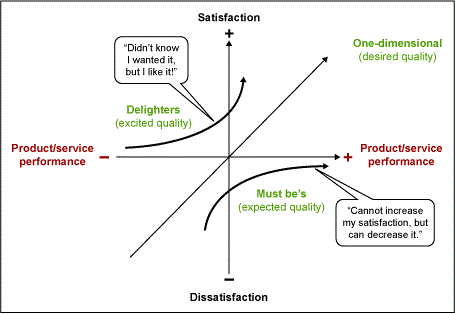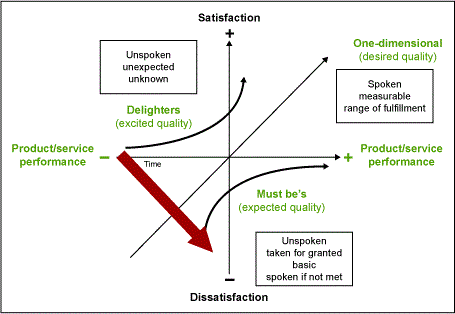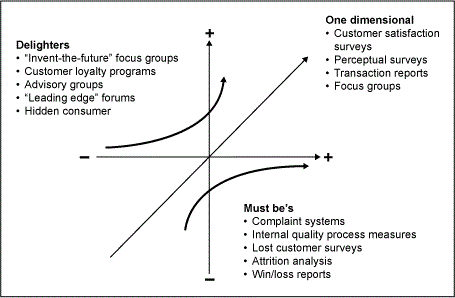
I will be the first to admit that I still have a few cases of 8-track tapes. For those too young to know what 8-track tapes are, please ask your parents. As a customer who purchased a lot of music, my needs were simple.
I wanted a clearer sound and something smaller to store. The music industry responded and introduced the cassette. The cassette was indeed smaller. It did not fade out and then back in with that annoying “click” that my 8-track tapes used to have.
I was pleased with my cassette collection. Then suddenly, the music industry introduced something called a CD – a compact disc. The CD offered better clarity, more storage capacity, and the ability to jump to specific songs or shuffle the order of their play. Best of all, one never had to rewind!
The point is simple. As a customer, my needs changed. In the move to CDs, I did not realize my needs had changed but the music industry, through research, keeping up with the competition and advances in technology, delighted me with new product offerings. Even today as my CDs are dust-covered because I only use Spotify, new advances in music technology are being made to further address music customer needs.
The Kano Analysis
How does a company analyze customer needs? How can it easily determine what delights customers or what their basic needs are? One powerful technique to address these questions has been developed by Professor Noriaki Kano of Tokyo Rika University and his colleagues. This is Kano’s theory: For some customer requirements, customer satisfaction is proportional to the extent to which the product or service is fully functional.
The Kano model addresses the three types of requirements:
- Satisfying basic needs: Allows a company to get into the market.
- Satisfying performance needs: Allows a company to remain in the market.
- Satisfying excitement needs: Allows a company to excel, and to be world-class.
Dissatisfiers or Basic Needs
Expected features or characteristics of a product or service (legible forms, correctly spelled name, basic functionality). These needs are typically “unspoken.” If these needs are not fulfilled, the customer will be extremely dissatisfied.
An example of an “unspoken” need when staying at a hotel is cleanliness. This includes a clean bathroom, clean linens, and a pleasant, fresh aroma in the air. When a person books a reservation at a hotel, they do not request a clean room. They expect it. If this basic need is not met, they will be extremely dissatisfied.
Satisfiers or Performance Needs
Standard characteristics that increase or decrease satisfaction by their degree (cost/price, ease of use, speed). These needs are typically “spoken.” Using the hotel example again, “spoken” needs could be Internet access, a room away from the elevators, a non-smoking room, the corporate rate, etc.
Delighters or Excitement Needs
Unexpected features or characteristics that impress customers and earn the company “extra credit.” These needs also are typically “unspoken.” Think of the Doubletree Hotels. Those who stay there are delighted by a freshly baked, chocolate chip cookie delivered to their room during turn-down service.

Customer Needs Change
The horizontal axis of this figure indicates how fully functional a product/service is. The vertical axis indicates how satisfied the customer is. The line going through the origin at 45 degrees, represents the situation in which customer satisfaction is directly proportional to how fully functional the product/service is.
In other words, it represents the situation in which the customer is more satisfied with a more fully functional product/service and less satisfied with a less functional product/service.
Kano terms such requirements as “one-dimensional” requirements. A 10 percent improvement in functionality results in a 10 percent improvement in customer satisfaction. For example, the faster the response time on a system, or the more miles per gallon for a vehicle, the more the customer likes it.
| Kano Requirements Type Definitions: A Summary | |
|
Requirements Type |
Definition |
| Must Be (Expected Quality) | Requirement that can dissatisfy (expected, but cannot increase satisfaction) |
| One-Dimensional (Desired Quality) | The more of these requirements that are met, the more a client is satisfied |
| Delighters (Excited Quality) | If the requirement is absent, it does not cause dissatisfaction, but it will delight clients if present |
| Indifferent | The client is indifferent to whether the feature is present or not |
| Reverse | The feature causes dissatisfaction |


Other Useful Tools and Concepts
While we’ve explored the Kano analysis in depth, it isn’t the only tool at your disposal when meeting your customer needs. If you’d like to see how to go from the voice of the customer to fulfilling your customers’ needs, we’ve got a handy tutorial to get you up to speed.
Additionally, if you’d like to learn about critical to customer requirements, our guide has you more than handled. Both these resources will get your organization on track when it comes to exceeding your customers’ wants.
Conclusion: What Delights Today…
Here is the Kano analysis in summary:
- The Kano analysis helps to identify unspoken needs before prioritization.
- It is intended to help prioritize customer needs.
- It should be linked to a company’s multi-generational project plan.
- Generation 1 has to cover the “must be’s.”
- The company must realize that customers’ expectations and/or needs vary over time.
Needs change. For example, in the Doubletree Hotel example about the freshly baked, chocolate chip cookie: Many people are becoming more health conscious now. Perhaps a high-calorie, confectionary item is no longer a top delighter. Also, consider the comment about the need for Internet access in the hotel room being a satisfier. While wireless Internet access began as a delighter, it is now a basic need of convenience.
The 2 important points to keep in mind are:
1) What delighted customers in the past is now expected.
2) What is expected today will not meet minimum customer expectations in the future.